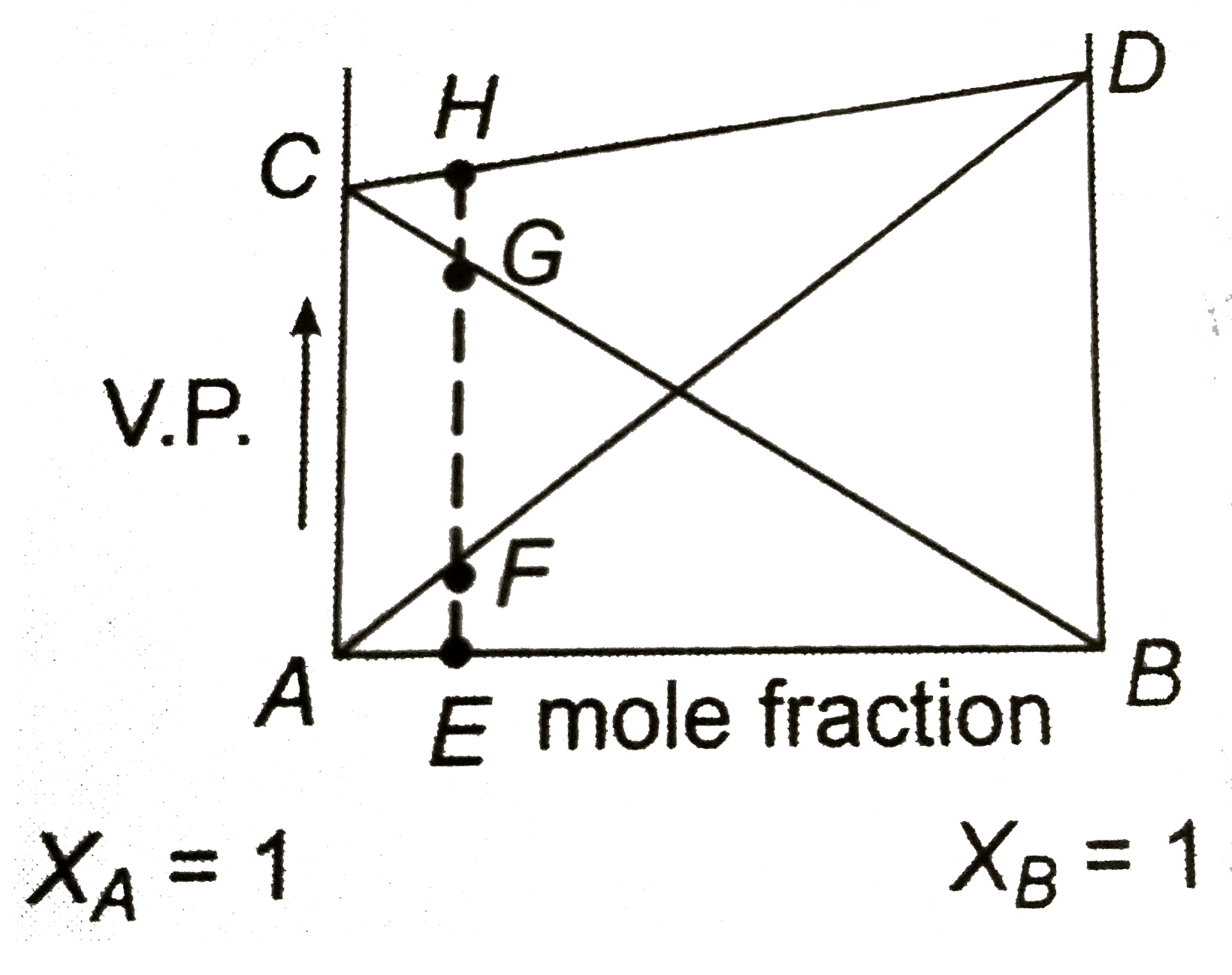Which of the following is are correct for an ideal binary solution of two volatile liquids (eg. Benzene and toluene) ?
Its vapour is always richer in the more volatile component ( compared to the liquid )
The liquid will gradually become richer in the less volatile component if such as mixture is boiled (distilled)
The pT (ie. The total pressure) above the solution will be the sum of the vapour pressures of the two pure components
The boiling point of the solution will be less than the boiling point of the two components
The correct Answer is:A,B
(A)X'AXB=P∘AXAP∘BXB
X'AX'B>XAXB(IfP∘A>P∘B)
(B)If P∘A is more, more A will evaporate more and B will stay back in the solution.
(C )PT=P∘AXA+P∘BXB≠P∘A+P∘B
(D)IfP∘A>P∘B . Then P∘A>PT>P∘B
P∘A>P∘AXA+P∘BXB>P∘B.Hence boiling point of solution is more than A but less than B.
Topper's Solved these Questions
Similar Questions
Knowledge Check
- Question 1 - Select One or More
Which of the following is/are correct for an ideal binary solution of two volatile liquids (eg. Benzene & toluene)?
AIts vapour is always richer in the more volatile component (compared to the liquid).BThe liquid will gradually become richer in the less volatile component if such a mixture is boiled (distilled).CThe PT (ie. The total pressure) above the solution will be the sum of the vapor pressures of the two pure components.DThe boiling point of the solution will be less than the boiling points of the two components. - Question 2 - Select One or More
Which of the following is/are correct for an ideal binary correct of two volatile liquid (e.g., benzene and toluene)?
AIts vapour is always richer in the more volatile component (compared to the liquid).BThe liquid will gradully become richer in the less volatile component if such a mixutre is boiled (distilled).CThe PT (i.e, the total pressure) above the solution will be the sum of the vapour pressures of the two pure components.DThe boiling point of the solution will be less than the boiling points of the two components. - Question 3 - Select One
Which of the following behaviours is true for an ideal binary liquid solution?
APlot of 1/PtotalversusYA(orYB) is nonlinearBPlot of PtotalversusYA is linearCPlot of PtotalversusYB is linearDPlot of 1/PtotalversusYA(orYB) is linear
Which of the following behaviour is true about the ideal binary liquid solution?
View SolutionWhich of the following behaviour is true about the ideal binary liquid solution?
View SolutionWhich of the following combinations are correct for a binary solution, in which the solute as well as solvent are liquid?
View SolutionBased on the given diagram, which of the following statements regarding the homogenous solution of two volatile liquids are correct?
 View Solution
View SolutionWhich of the following plots represents the behavior of an ideal binary liquid solution ?
View Solution

